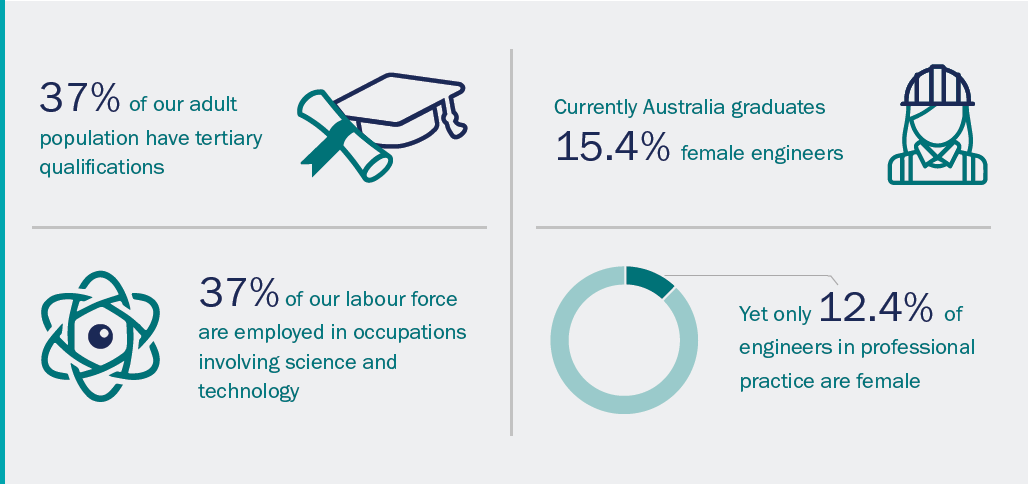
Talent availability – Robotics skills
Australia’s world-class education system, along with a good research and development base in robotic technologies, means that there is a high-quality pool of talent available to reposition Australia as a knowledge-driven robotics nation. Australia’s technical expertise is well-regarded internationally, making our graduates highly valued targets for recruitment by global technology giants and overseas research institutions. Consequently, many Australian graduates and researchers with relevant capabilities leave to work overseas due to lack of local employment opportunities. Ideally, the aim is to see Australian graduates find opportunities in Australia, either joining established companies or by starting their own enterprises. The key challenge for the fledgling robotics industry is to build a path from research to commercialisation of products and services that will support the achievement of this aim.
Australia has a strong skills base, with 37 per cent of the adult population earning tertiary qualifications and 37 per cent of the labour force being employed in occupations involving science and technology. Despite concerns raised by the Productivity Commission about the quality of Australia’s education system [PC17], Programme for International Student Assessment (PISA) scores in science for 15-year-olds are the fourth highest in the OECD. There are also opportunities to expand the domestic talent pool by challenging the gendered nature of the robotics and automation workforce. Currently Australia graduates 15.4 per cent female engineers [ER16] yet only 12.4 per cent of engineers in professional practice are female [EA17] and these statistics have remained static for more than a decade. It would make a significant difference if qualified women were more highly represented in robotics, or in engineering in general, in Australia.
As well as creating homegrown talent to support an Australian robotics industry, there also needs to be consideration of how to become a net importer of suitable talent. Already one in three Australian workers is born overseas [II18] and Australia will continue to rely on immigration to maintain and increase the high levels of skills and capacity required to support a robotics industry. This issue was highlighted by Deloitte Access Economics and the Australian Computer Society [ADP17] who noted the importance of visa and migration arrangements that:
“ensure Australian businesses can access the necessary ICT skills to facilitate future growth, while balancing the need to build and train local talent over time.”
The challenges in building Australia’s robotics and automation talent base through education, increasing participation by women and older workers, and migration were also discussed in the Deloitte Access Economics/Australian Computer Society report [ADP17].

